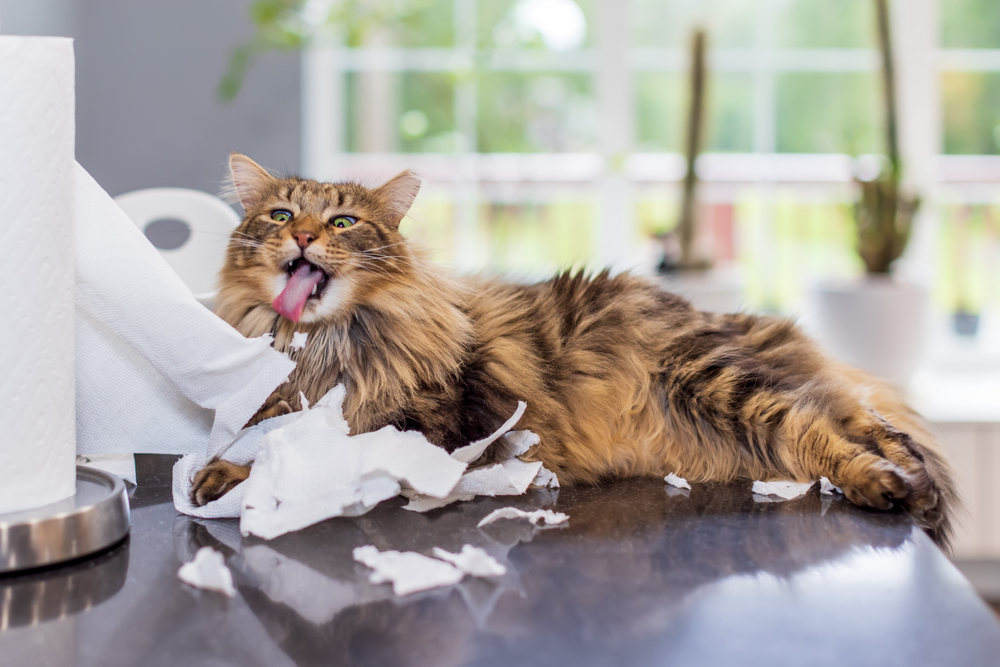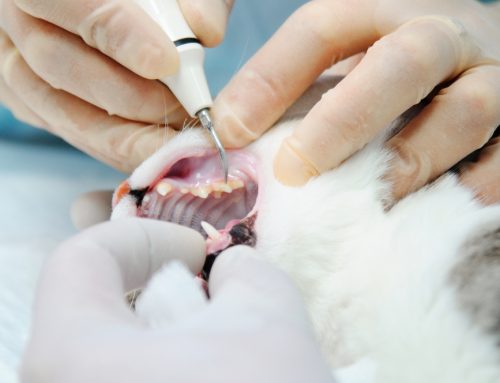Cats are intelligent animals who need stimulation throughout their day to prevent boredom. A bored cat is a naughty cat. If you have ensured your cat’s environment is enriched, but they are still demonstrating inappropriate behavior, have no fear. The team at Bolton Veterinary Hospital wants to share information about what causes these problems in your cat, and ways to stop the misbehavior.
#1: Your cat refuses to use the litter box
Cats are fastidious creatures who have particular ideas about their bathroom requirements. Follow these tips.
- Veterinary exam — Rule out a medical issue first. Have our veterinary team evaluate your cat for any health issues. Urinary tract infections, kidney disease, and any problem causing your cat pain can result in inappropriate elimination.
- Litter box rules — You need to be as fastidious as your cat when it comes to their litter box.
- The general rule is one litter box for every cat in the house, plus one extra.
- Provide a litter box on every floor to ensure the box is convenient when your cat has to go.
- Clean the box frequently, scoop multiple times a day, and change the liner and the litter weekly.
- Do not put the litter box in a noisy or busy room. Cats are startled easily, and if they are disturbed, they may be convinced they need to find an alternate powder room.
- Do not put the litter box in the same room as your cat’s food and water bowls. They do not want to eat where they use the bathroom.
- Use an open litter box. Covered boxes contain the messy litter better, but many cats avoid using a closed box.
- Use a large enough box that allows your cat to move around easily. The box should be at least as long as your cat’s body from their nose to the tip of their extended tail, and as wide as your cat is long.
- If you recently brought your cat inside from the outdoors, or you allow them to roam inside and outside, they may prefer a more natural litter, such as sand, wood pellets, or walnut shells.
- Even cats who are accustomed to using litter boxes tend to prefer an unscented, clay-based litter.
- Stressful conditions —Any incident that causes your cat stress can result in inappropriate elimination. This can include being tormented by another house pet, house guests, or home renovations. You will need to resolve the stressful situation before you can expect them to return to their litter box. You can read more about potential stressors for cats in our earlier blog article, Kitty Commodities and Stress Management.
#2: Your cat is scratching the furniture
Cats need to scratch to keep their claws sharpened and remove worn outer claws. They also scratch to mark their territory. You will need to take certain steps to ensure they do not use your new couch to hone their talons.
- Nails — Paying attention to your cat’s nails can help.
- Clip your cat’s nails regularly.
- Consider capping their claws. Plastic caps that can be attached to your cat’s claws with an adhesive can last four to six weeks.
- Scratching posts — Provide a variety of scratching posts to determine which type your cat prefers. Once you know their preference, provide posts in several locations.
- Offer your cat posts that are vertical or horizontal, and made of different materials, including cardboard, wood, carpet, sisal, and upholstery.
- Ensure the post is stable and will not fall over or wobble when your cat scratches.
- Make their scratching post interesting by sprinkling on catnip, hanging a favorite toy, and placing the post in a preferred area.
- Deterrents — You can deter inappropriate scratching several ways:
- Remove or cover the off-limits object and place the scratching post nearby.
- Place sandpaper or double-sided tape on the floor where your cat would stand to scratch on the off-limits object.
- As a last resort, you might use a squirt bottle, rattle can, or hand-clapping to discourage your cat from scratching something inappropriate.
#3 Your cat is showing aggressive behavior

An aggressive cat is not as problematic as an aggressive dog, but they can still cause damage with their teeth and claws—especially with their sharp teeth, which can leave a deep puncture wound that can easily become infected. You will need to determine why your cat is showing aggression before you can stop the behavior.
- Medical condition — Your cat may be in pain or have a medical condition causing discomfort. They should be evaluated for a medical issue first.
- Body language — Cats communicate using facial expressions, body postures, and vocalizations. To understand what your cat is trying to tell you, you should learn what their body language is saying. A misunderstanding can lead to your cat being aggressive when you do not heed their warning.
- Stress — If your cat is aggressively targeting another house cat, separate their feed bowls and litter boxes. Provide scratching posts for each cat in their preferred area. Try pheromones to help reduce tension. If one or both cats is intact, neutering them should solve the problem.
You likely will never get your cat to stop knocking objects off shelves, but hopefully you can end their other unwanted behaviors. If your cat is behaving inappropriately, contact our team at Bolton Veterinary Hospital and let us ensure that a medical issue is not the culprit.







Leave A Comment